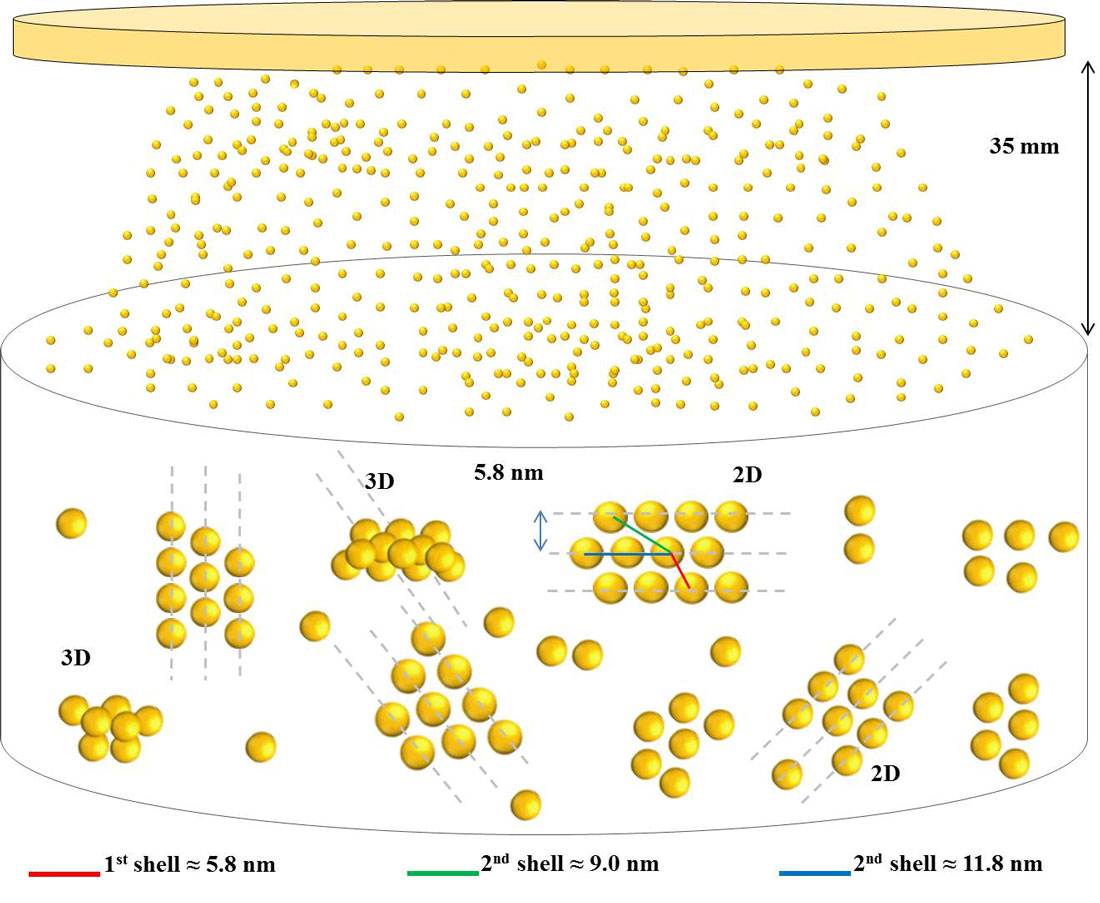Gold Nanoparticles: Properties, Synthesis, and Applications
What are Gold Nanoparticles?
Gold nanoparticles (AuNPs) are nanoscale particles of gold, typically ranging in size from 1 to 100 nanometers (nm). These nanoparticles exhibit unique physical, chemical, and optical properties that differ from bulk gold, making them attractive for various applications in medicine, catalysis, electronics, and sensing.

Properties of Gold Nanoparticles
Gold nanoparticles possess several unique properties that make them attractive for various applications:
Optical Properties
AuNPs exhibit a strong surface plasmon resonance (SPR) effect, which is the collective oscillation of conduction electrons in response to incident light. The SPR band of AuNPs can be tuned by varying their size, shape, and surrounding medium, allowing for applications in imaging, sensing, and photothermal therapy.
Chemical Stability
Gold nanoparticles are chemically stable and resistant to oxidation, making them suitable for use in harsh environments and long-term storage. Their stability also enables surface functionalization with various ligands and biomolecules for targeted delivery and sensing applications.
Biocompatibility
AuNPs are generally considered biocompatible and non-toxic, making them attractive for biomedical applications such as drug delivery, bioimaging, and biosensing. However, the biocompatibility of AuNPs depends on factors such as size, shape, surface chemistry, and dose.
Synthesis of Gold Nanoparticles
Various methods have been developed for the synthesis of gold nanoparticles, each with its advantages and limitations. Some common synthesis methods include:
Citrate Reduction Method
The citrate reduction method, also known as the Turkevich method, is the most widely used approach for synthesizing AuNPs. It involves the reduction of chloroauric acid (HAuCl4) with sodium citrate in an aqueous solution. The citrate ions act as both reducing and stabilizing agents, resulting in the formation of spherical AuNPs with diameters ranging from 10 to 20 nm.
Seed-Mediated Growth Method
The seed-mediated growth method allows for the synthesis of AuNPs with controlled sizes and shapes. It involves the initial formation of small AuNP seeds, followed by the growth of these seeds into larger nanoparticles by the addition of a growth solution containing HAuCl4, a weak reducing agent (e.g., ascorbic acid), and a shape-directing agent (e.g., cetyltrimethylammonium bromide, CTAB).
Biological Synthesis
Biological synthesis methods utilize living organisms or biomolecules to produce AuNPs. These "green" synthesis approaches offer advantages such as eco-friendliness, biocompatibility, and cost-effectiveness. Examples include the use of plant extracts, bacteria, fungi, and biomolecules (e.g., proteins, DNA) as reducing and stabilizing agents.
Applications of Gold Nanoparticles
Gold nanoparticles find applications in a wide range of fields due to their unique properties:
Biomedical Applications
AuNPs are extensively used in biomedical applications, such as:
- Drug delivery: AuNPs can be functionalized with drugs, antibodies, or targeting ligands for targeted delivery to specific cells or tissues.
- Bioimaging: The strong SPR effect of AuNPs makes them suitable as contrast agents for various imaging techniques, such as computed tomography (CT), photoacoustic imaging, and surface-enhanced Raman spectroscopy (SERS).
- Photothermal therapy: AuNPs can convert absorbed light into heat, enabling their use in the selective destruction of cancer cells or bacteria.
- Biosensing: AuNPs can be used in the development of sensitive and selective biosensors for the detection of various analytes, such as proteins, nucleic acids, and small molecules.
Catalysis
Gold nanoparticles exhibit excellent catalytic activity for various chemical reactions, such as oxidation, reduction, and coupling reactions. Their high surface-to-volume ratio and unique electronic properties contribute to their catalytic performance. AuNPs have been used as catalysts for the synthesis of fine chemicals, environmental remediation, and fuel cell applications.
Electronics
AuNPs have been explored for use in electronic devices, such as memory devices, transistors, and sensors. Their unique electronic properties, such as quantized charging and conductivity, make them promising candidates for the development of miniaturized and high-performance electronic devices.
Challenges and Future Perspectives
Despite the significant progress in the synthesis and application of gold nanoparticles, several challenges remain to be addressed. These include the scalable and reproducible synthesis of AuNPs with well-defined sizes and shapes, the long-term stability and biocompatibility of surface-functionalized AuNPs, and the understanding of their environmental and health impacts.
Future research on gold nanoparticles will focus on the development of novel synthesis methods, the exploration of new applications, and the integration of AuNPs with other nanomaterials and technologies. The combination of AuNPs with emerging fields, such as nanotechnology, biotechnology, and machine learning, is expected to lead to new breakthroughs and innovations.
Further Reading
Chemical Reviews, Gold Nanoparticles: Assembly, Supramolecular Chemistry, Quantum-Size-Related Properties, and Applications toward Biology, Catalysis, and Nanotechnology
Chemical Reviews, Gold nanoparticles in chemical and biological sensing
Frontiers in Bioengineering and Biotechnology, Multifunctional Gold Nanoparticles: A Novel Nanomaterial for Various Medical Applications and Biological Activities
